Plants that look like Japanese knotweed
We explore the plants that people most often mistake for Japanese knotweed
Japanese knotweed can halt mortgage applications, so it’s important it’s identified correctly.
A lot of the calls we receive are from anxious homeowners and potential buyers, who have spotted a suspicious looking plant that has grown rapidly, wasn’t there last year and they’ve been told by a friend that it may be knotweed.
Our advice in this situation is not to panic. Take photos of the plant and the area it’s in. We offer a free Japanese knotweed identification service from a photo. This is a great first step if you’re not completely sure what the weed is and are not ready to commission a full survey. We do not charge for this identification but we do have a JustGiving page to support our chosen charities.
On average, around half of the images we receive each week are not knotweed. There are many plants that look like Japanese knotweed and have similar characteristics. The plants we find that are most commonly mistaken for Japanese knotweed are:

Quick Links
What are the top Japanese knotweed look alikes?
While these plants do not contain all the features of knotweed, they have enough of a similarity to cause anxiety. The leaf shape in bindweed is heart shaped and is comparable to knotweed; however bindweed does not have the flat edge like knotweed does. Russian vine has similar white flowers and has the ability to grow rapidly, quickly overwhelming other garden plants. Knotweed canes in the winter have a very similar appearance to bamboo, which is often why it is not spotted during this time.
Calystegia sepium
Bindweed
Hedge bindweed or bellbind (Calystegia sepium) with its pure white trumpet flowers is a familiar sight, choking plants in borders and twining around any plant shoot or cane. The smaller field bindweed (Convolvulus arvensis) with white or pink flowers is problematic in long grass and bare soil.
Similarities:
Heart shaped leaves, white flowers, spreads quickly in gardens, hard to get rid of.
Differences:
Climbing habit – not self-supporting, flowers are large bells rather than small clusters.
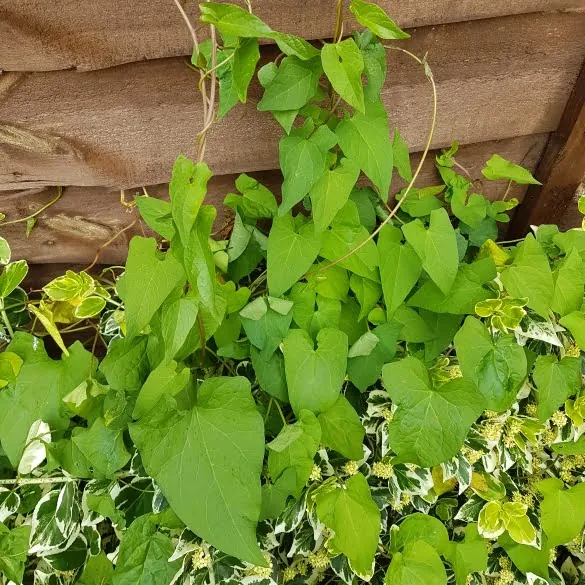
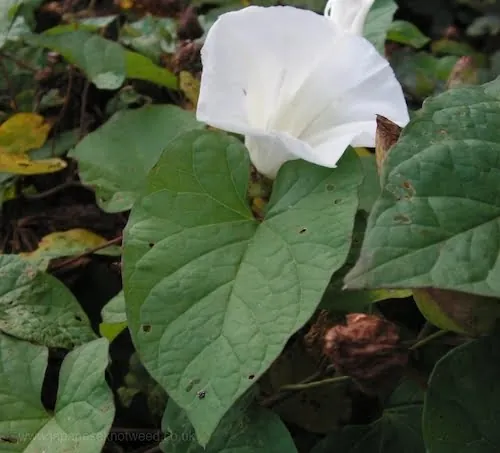
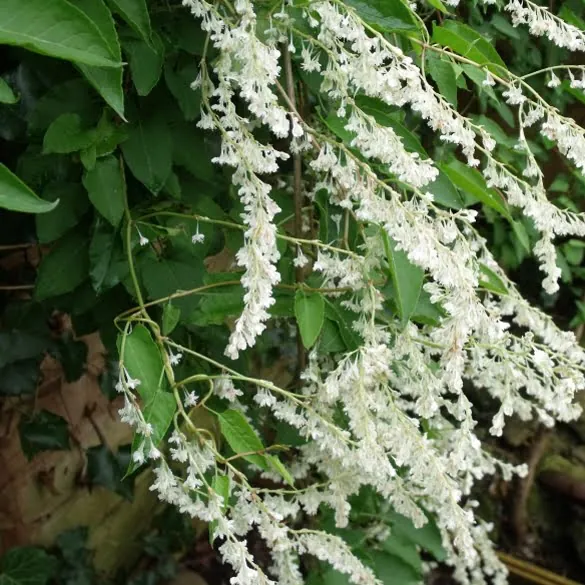
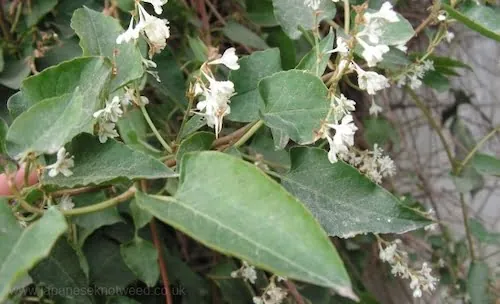
Fallopia baldschuanica
Russian vine
Russian vine is a close relative of Japanese knotweed, with an equally aggressive nature. Like knotweed, it is native to Asia and was imported as an ornamental for its flower-laced vines. The climbing stems are known to reach at least 10m in length, and will quickly strangle trees, lesser climbers, and garden structures.
Similarities:
Triangular shaped leaves, clusters of white flowers in summer, invasive.
Differences:
Climbing/vining plant that is not self-supporting, produces fruit.
Houttuynia cordata
Houttuynia
Houttuynia are rhizomatous perennials with pungently orange-scented, heart-shaped leaves and tiny yellow/white flowers in spikes with usually four prominent white bracts at the base. H. cordata is a wide-spreading herbaceous perennial to 30cm in height, with dull blue-green leaves and dense flower spikes in late spring
Similarities:
Heart shape leaf is similar to Japanese knotweed, native to south-east Asia, alternate leaves, white flowers.
Differences:
Much smaller than Japanese knotweed, no erect canes.
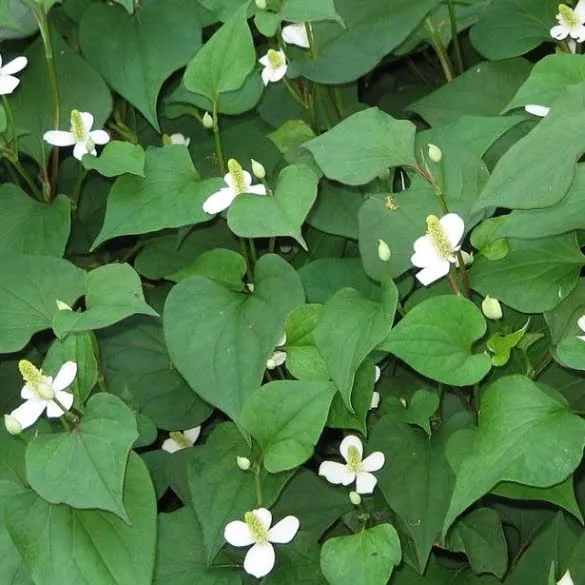
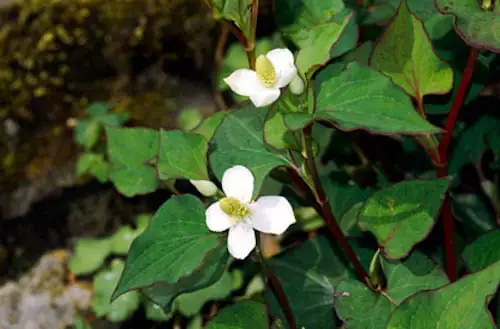
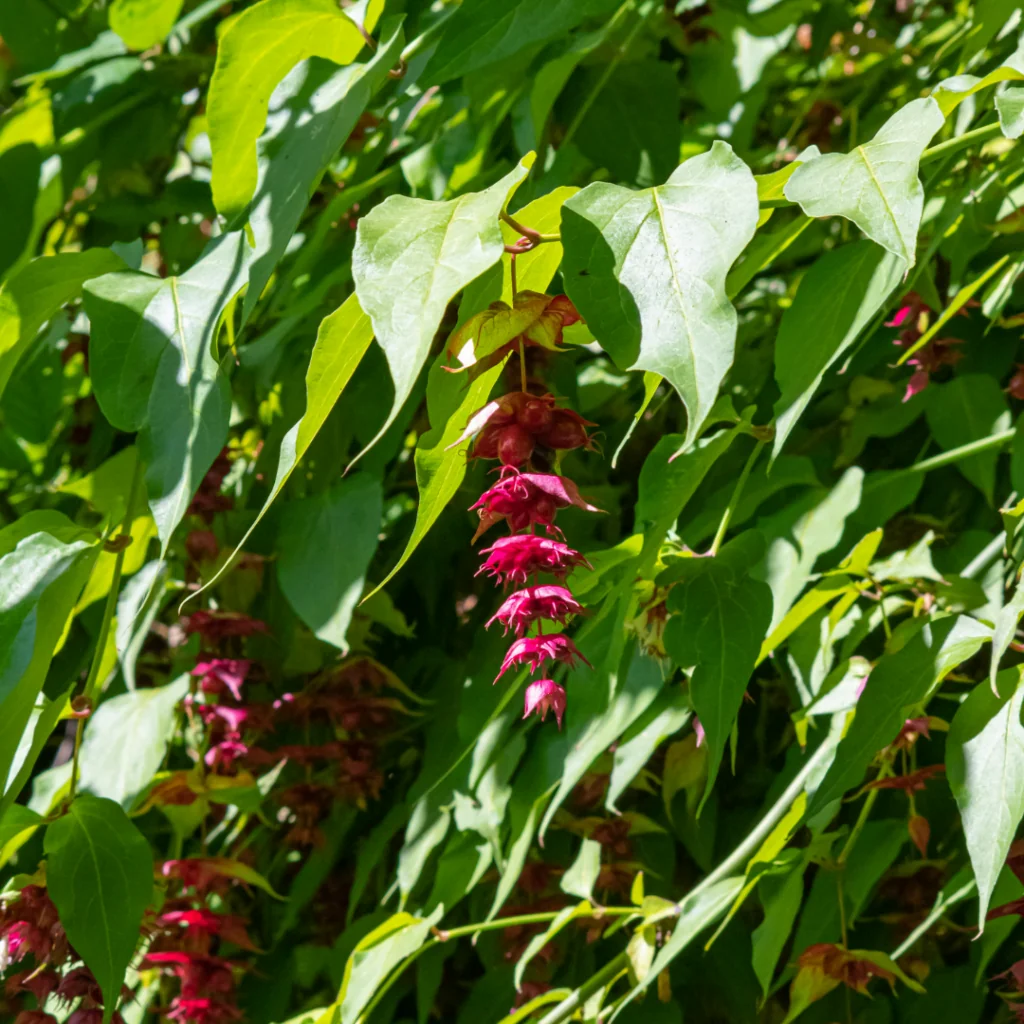
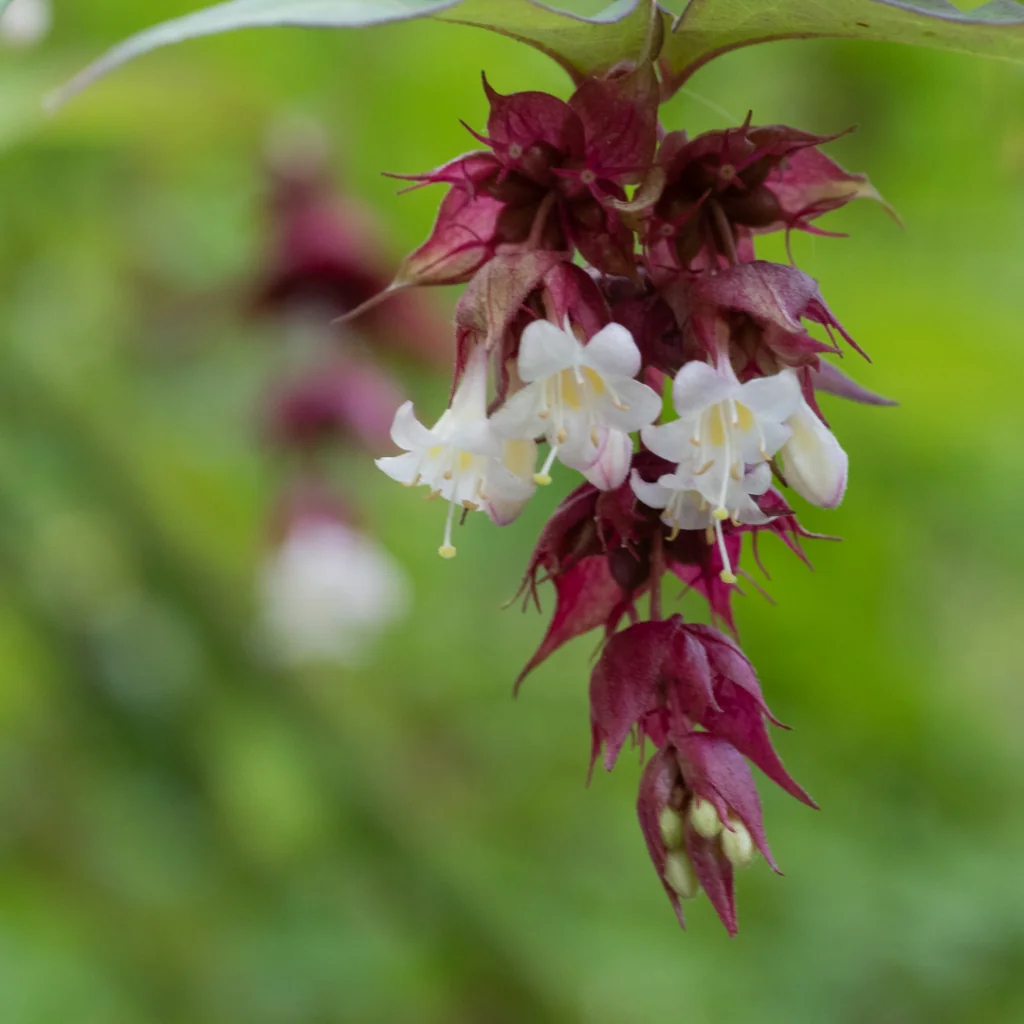
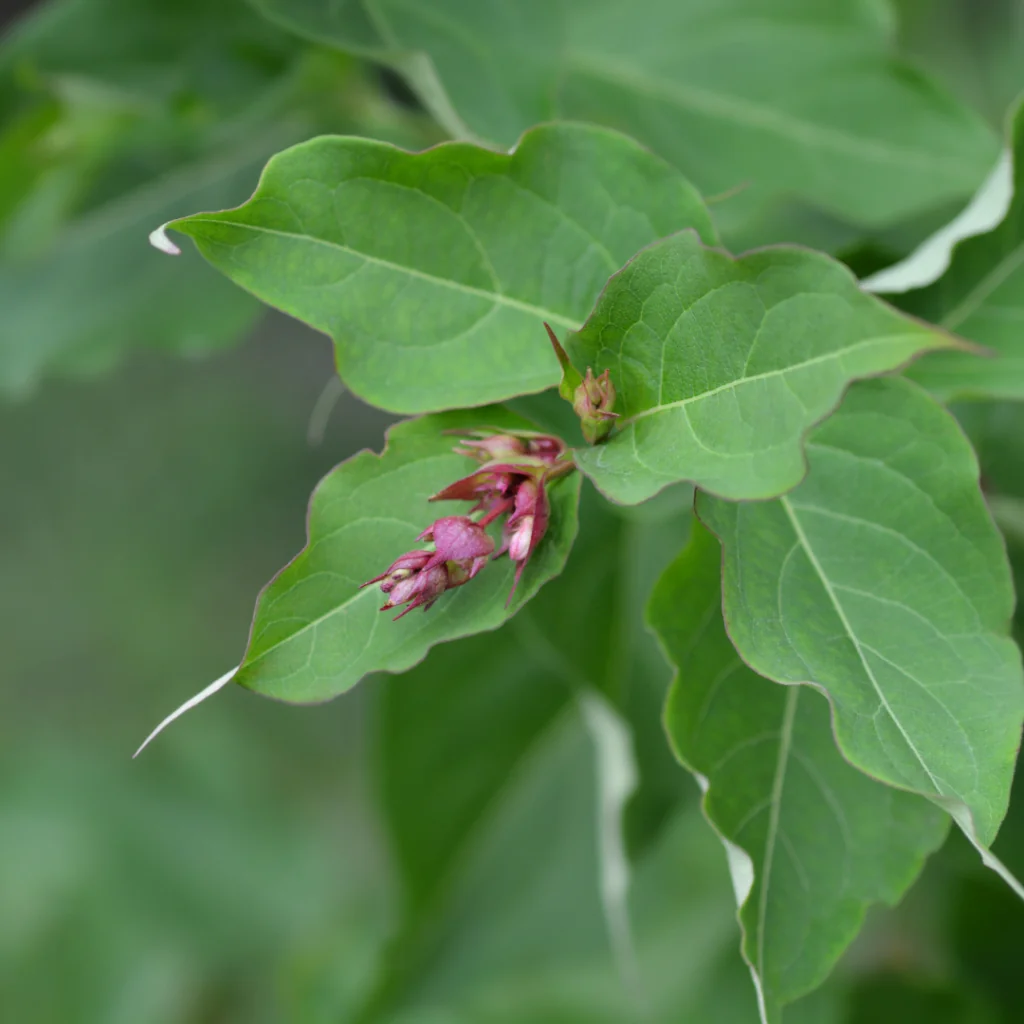
Leycesteria formosa
Himalayan honeysuckle
Himalayan Honeysuckle or Pheasant berry is a garden ornamental native to southwestern China. It has hollow, upright green stems reaching 3m in height, which can grow quickly in spring from old wood or from the root. The leaves are opposite and dark green in colour, with pointy ends. Flowers are pinky/purple and when pollinated, form dark purple fruits attractive to birds.
Similarities:
Tall green stems, dies back in winter, similar heart shaped leaves to knotweed.
Differences:
Leaves are opposite each other, flowers and fruit are pink, not white
Hedera helix
Ivy
H. helix is a vigorous, self-clinging climber with three- to five-lobed, glossy, evergreen leaves, often with pale green veins, and some reddish or bronzy colours in autumn. Mature plants produce bushy, non-clinging branches with diamond-shaped leaves, and small, nectar-rich, greenish-yellow flowers in clusters of rounded heads in autumn, followed by black berries in winter.
Similarities:
Invasive, similar leaf shape.
Differences:
Climbing habit, ground cover.
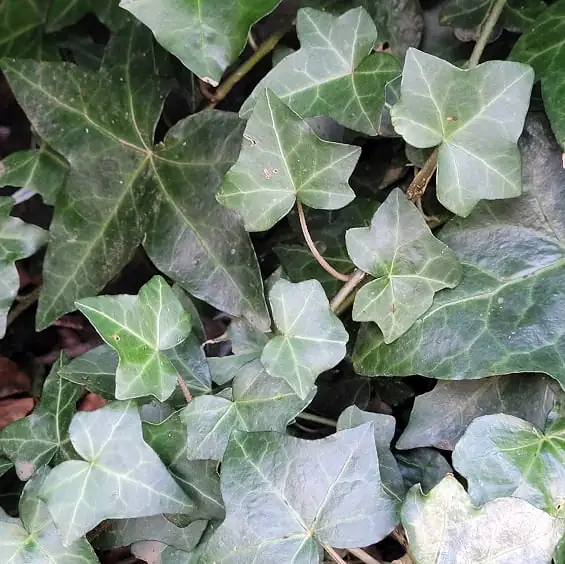
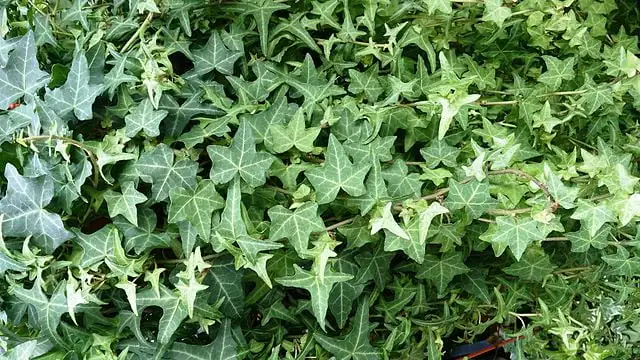
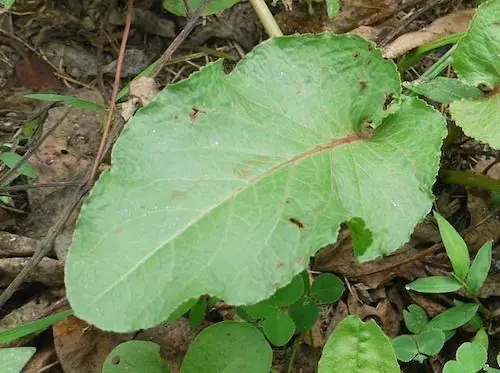
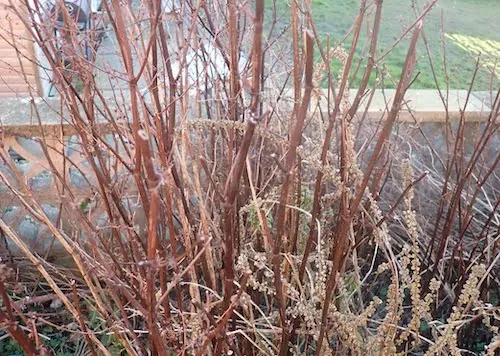
Rumex obtusifolius
Broadleaf dock
A highly invasive member of the knotweed family, that spreads readily by seed. The plants are extremely hardy, with aggressive roots. It is a common garden weed here in the UK and also grows readily in arable land, meadows and roadsides. It is easily recognisable by its large, oval leaves which grow up to 30cm in length. Regrowth from the rosette usually takes place in spring.
Similarities:
Perennial, leaves brown flower stems standing in winter.
Differences:
Tongue shaped leaves, grows in small clumps.
Aegopodium podagraria
Ground elder
Ground elder is a member of the carrot family that has a fearsome reputation among gardeners. It is native to Europe and Asia and considered invasive outside of its native range. Stems are erect, hollow and groved.
Similarities:
Very invasive, difficult to remove once established, grows from rhizome fragments, white flowers.
Differences:
Broad, toothed leaves, plants grow to a maximum of 100cm in height, flowers are umbel in shape rather than clusters.
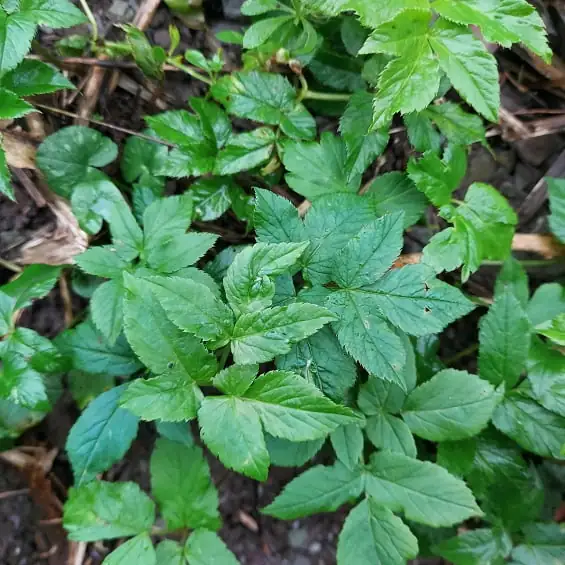
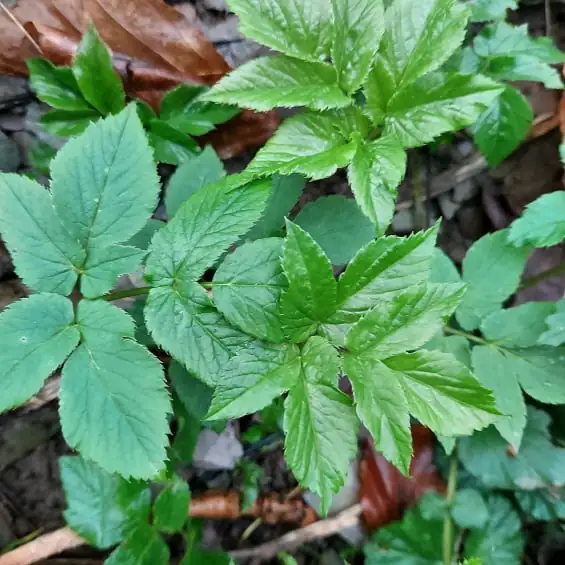
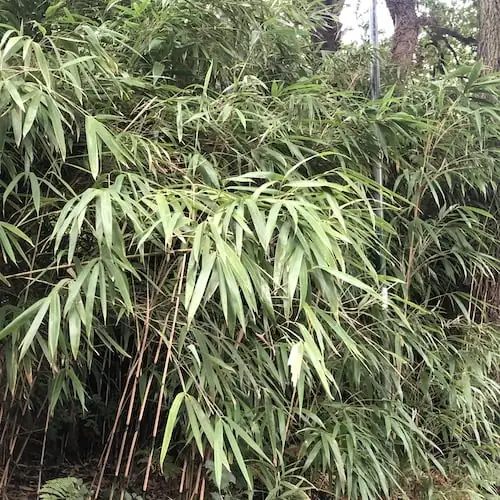
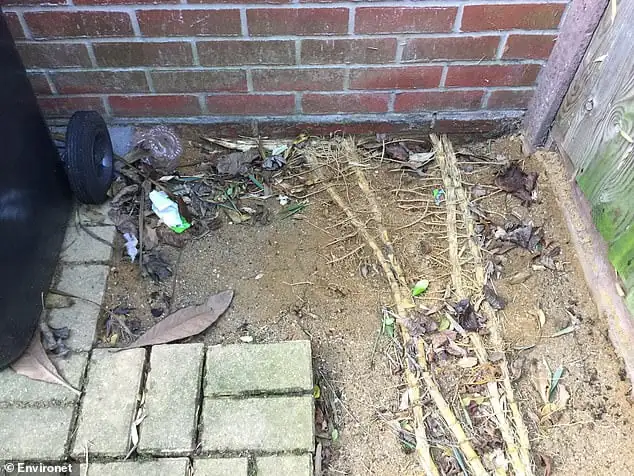
Bambusoideae
Bamboo
Bamboo comes in all shapes and sizes and is largely used for screening and ornamental purposes. Bamboos are some of the fastest growing plants in the world, and like knotweed, grow from a rhizome system underground. The most notable feature of the bamboo family is its straight canes, standing upright and supporting grass shaped leaves. Many running bamboo varieties are acknowledged as being invasive.
Similarities:
Tall upright canes, some varieties are invasive and spread quickly. Have the ability to cause damage to structures and hard landscaping.
Differences:
Leaves are generally thin and tapered. Stems are tough and hard to break by hand.
Persicaria Polymorpha (Koenigia × fennica)
Giant fleece flower
Another member of the knotweed family, Giant fleece flower, or Finnish knotweed is a relatively rare sighting in the UK. It is far more likely that you will see Himalayan knotweed, which shares many of the same characteristics – but is smaller in stature. The flowers of P. polymorpha are very similar in appearance to Japanese knotweed.
Similarities:
Cream coloured inflorescence, zig zag stem formation.
Differences:
Pointy leaves, flower spikes stand erect rather than hanging in clusters.
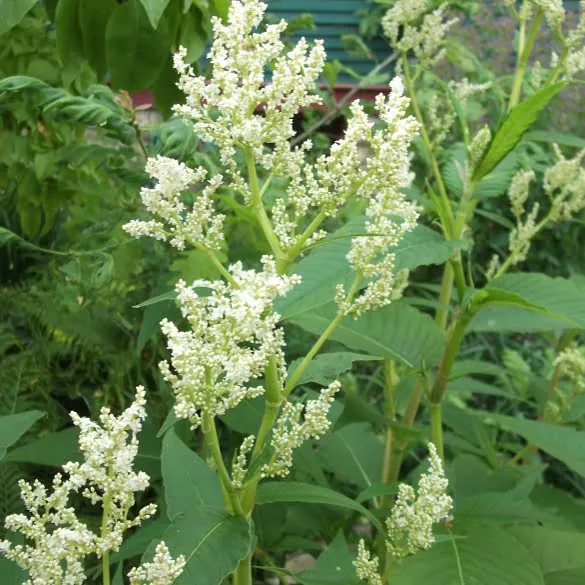
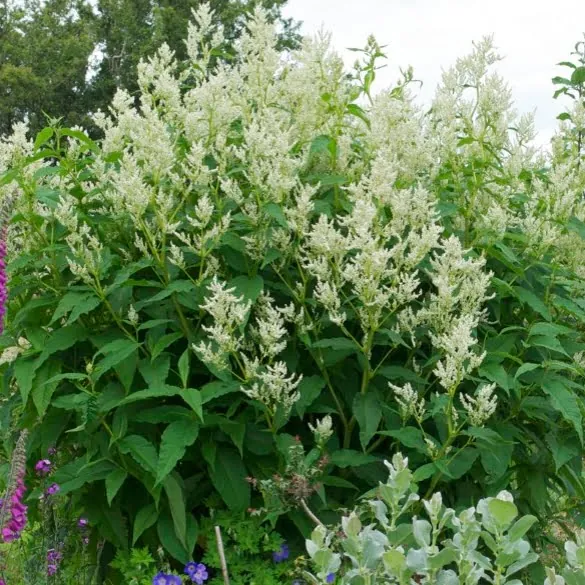
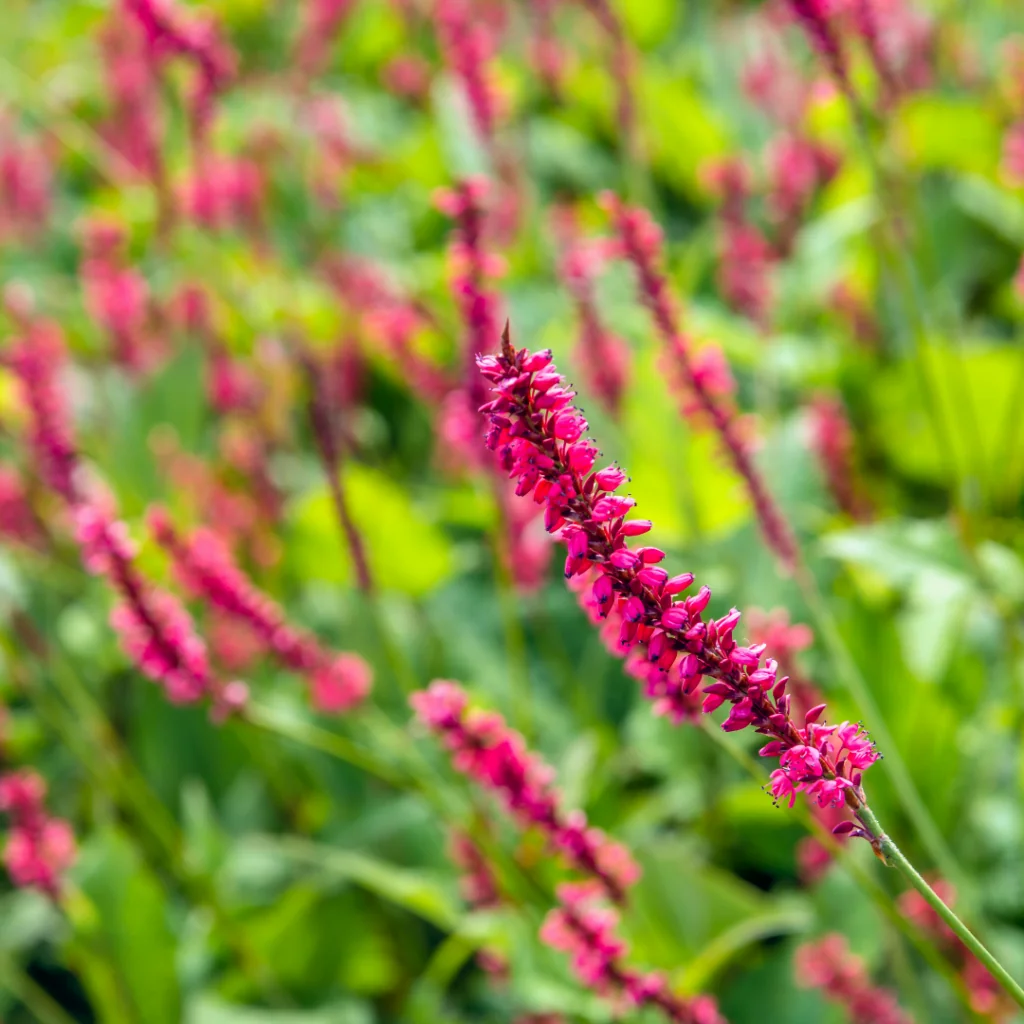
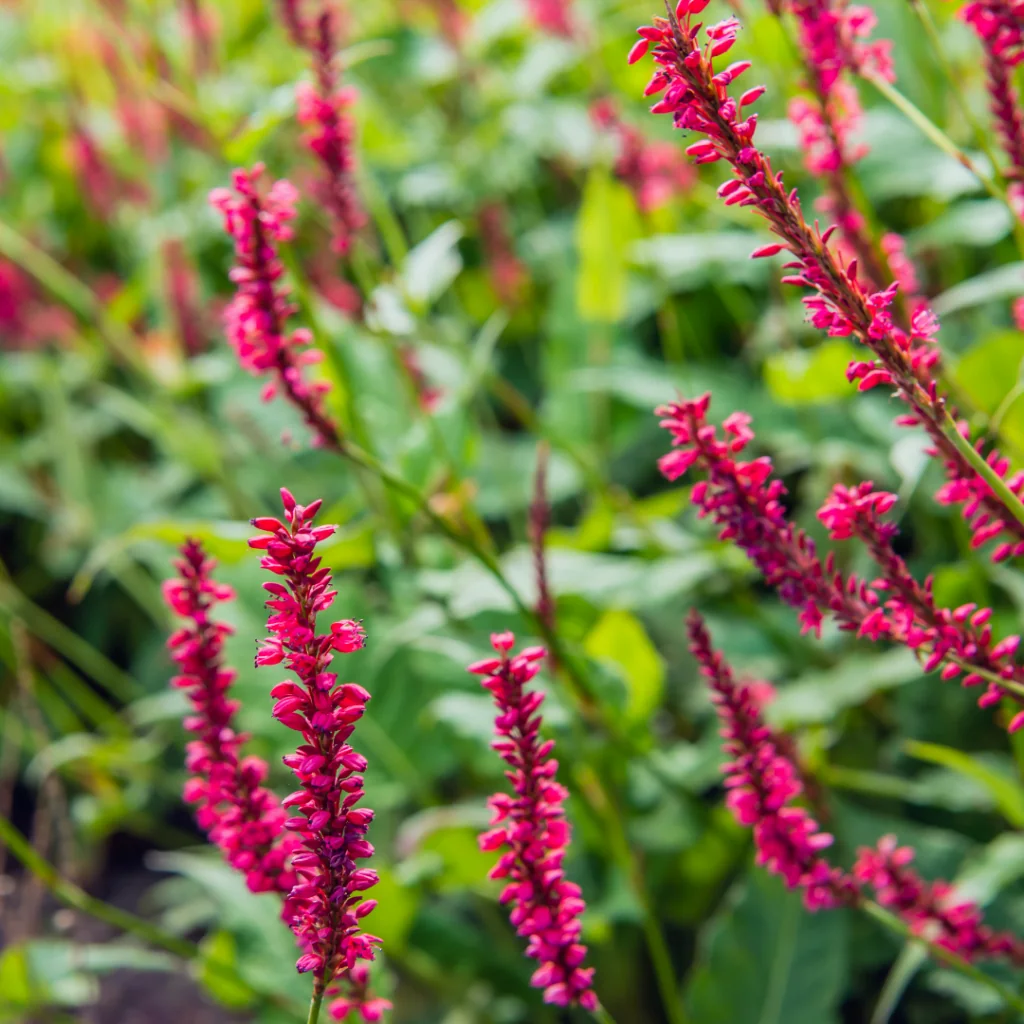
Persicaria Amplexicaulis
Red bistort
Red bistort or mountain fleece is another knotweed family member. Native to China, it was imported as a garden ornamental, prized for its heart shaped leaves and narrow spikes of red, or white flowers. It also likes damp conditions and provides good ground cover. Numerous cultivars have been developed over the years, making it a garden favourite.
Similarities:
Heart shaped leaves, some varieties have white flowers
Differences:
Smaller than knotweed, flowers are single inflorescences rather than clusters.
Persicaria Microcephala
Red dragon
Red dragon’ is a vigorous, spreading perennial with lance-shaped, purplish-green leaves, and rounded clusters of tiny white flowers in late summer and autumn.
Similarities:
Lance shaped leaves, zig zag stems, clusters of white flowers.
Differences:
Purple leaves and stems, much smaller in stature than Japanese knotweed.
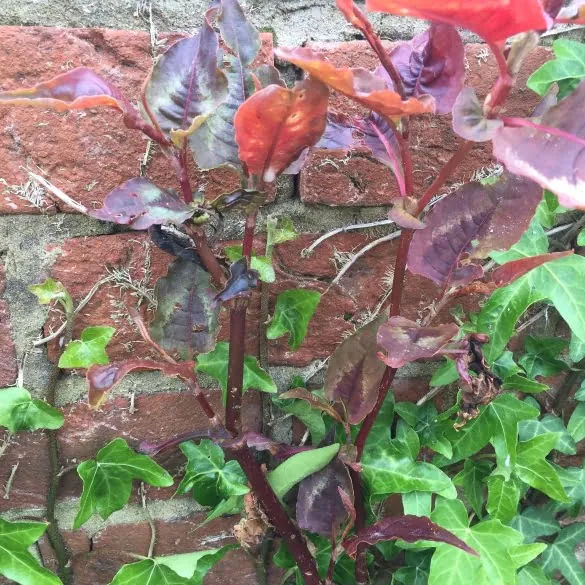
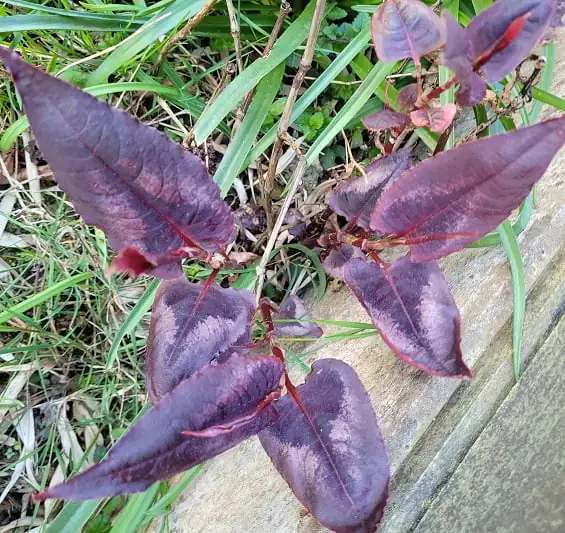
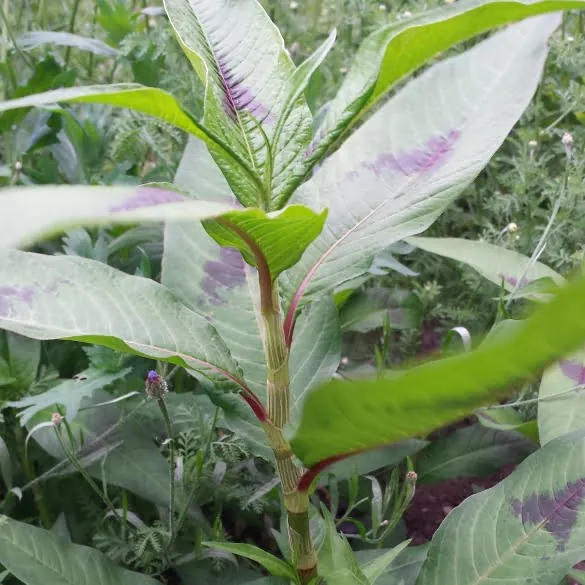
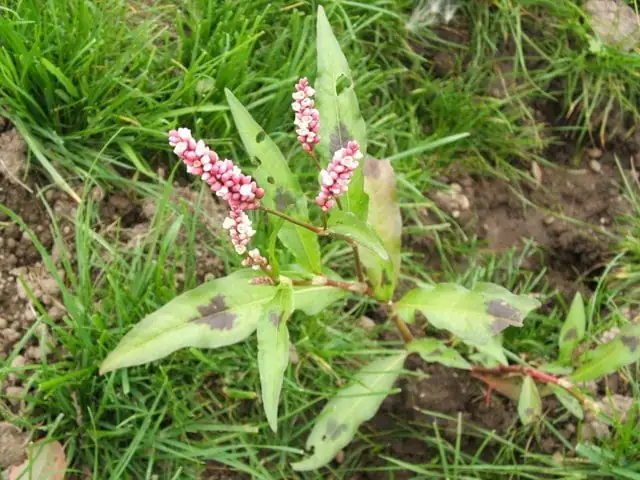
Persicaria Maculosa
Redshank
In the UK, redshank is regarded as a weed, without natural habitat, and is usually associated with human activity. Unlike knotweed, Redshank is an annual herb, growing up to 1m in height. It does have alternate leaves, giving that classic zig-zag formation on the stem. The leaves often have a brown or black spot in the centre. Flower spikes are pink, visible from July to Septembe
Similarities:
Zig Zag stem formation, invasive.
Differences:
Annual, pink flowers, ovate leaves.
Take a look at our Japanese knotweed picture gallery and our identification videos to aid you in identifying knotweed throughout the season.
Japanese knotweed has some very distinctive features, once you know what to look for:
- Spade shaped leaf
- Red speckled stem
- Zig zag formation
- Creamy-white flowers in summer
Be aware of bonsai regrowth, which often occurs after glyphosate based herbicides are applied. Bonsai growth looks very different to normal Japanese knotweed, with much smaller leaves and spindly stems.
If you find a plant and think it’s Japanese knotweed but are not completely sure, email your pictures to [email protected] and we will be able to assist you. Or alternatively call 01932 868 700 and one of our consultants will be happy to help.
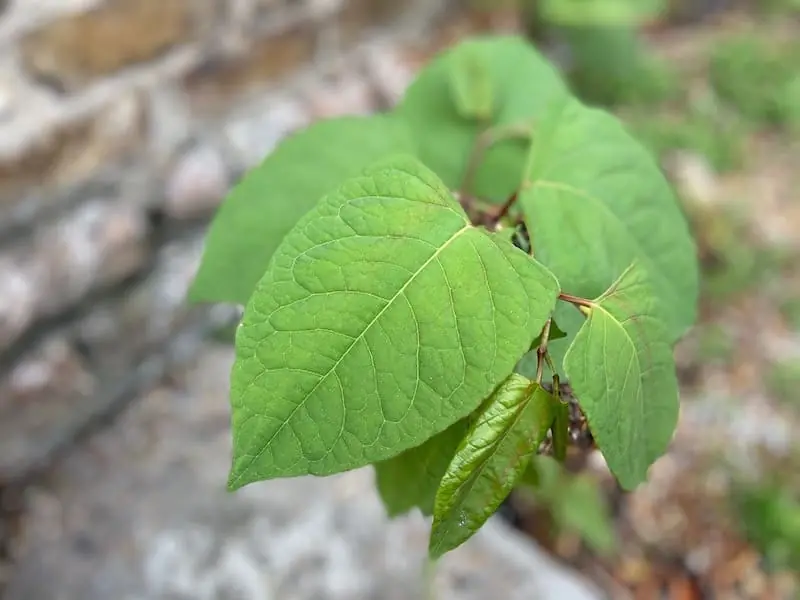
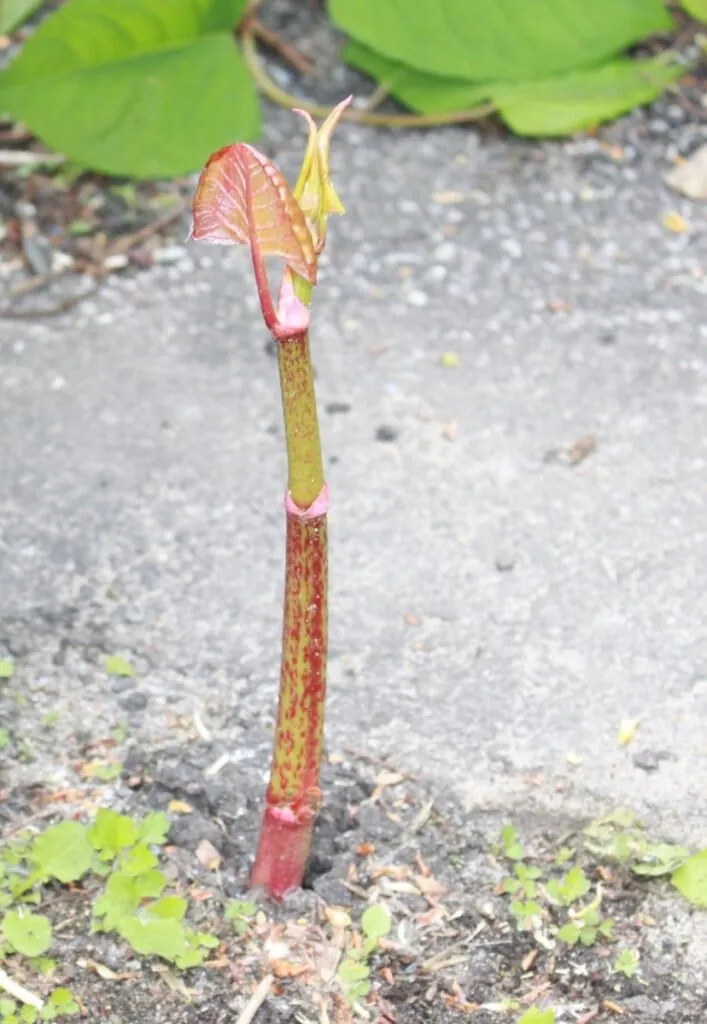
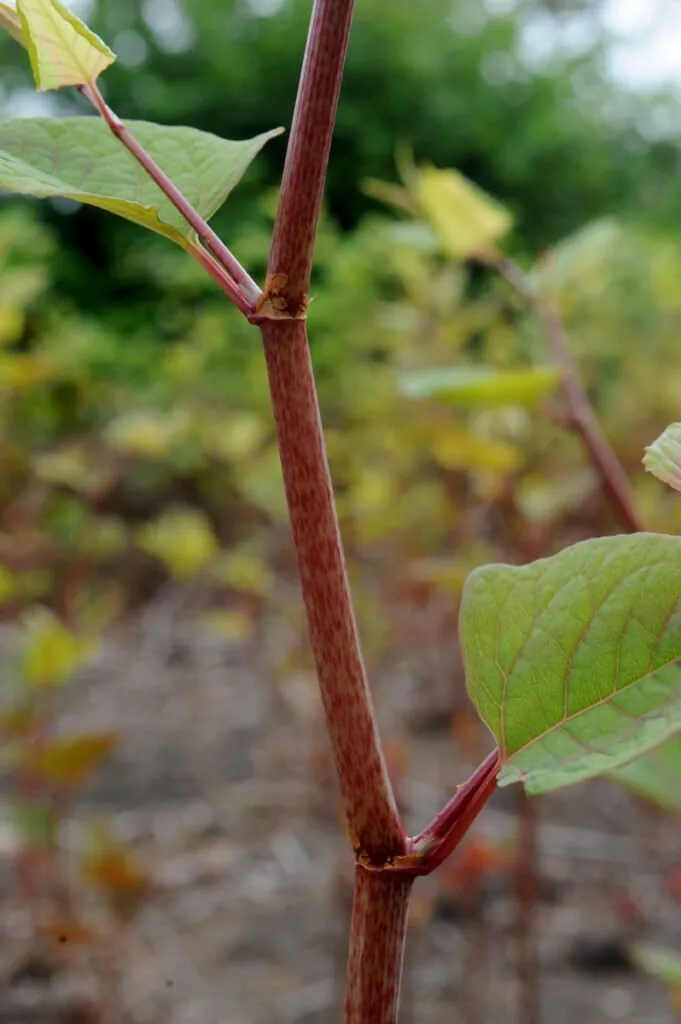
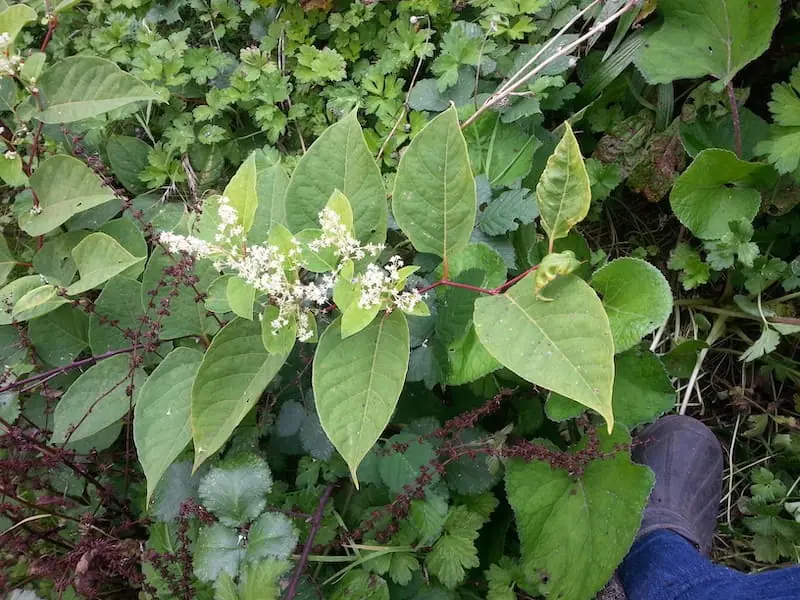
Start fixing your invasive plant problem today
Need help or advice?
Call or email to speak to the specialists
GET IN TOUCH
Contact us
Our team of experts is available between 9am and 5:30pm, Monday to Friday to answer your enquiries and advise you on the next steps
Want a survey?
If you already know you have an invasive plant problem, you can request a survey online in less than two minutes by providing a few brief details. A member of the team will swiftly come back to you with further information and our availability.
Need quick plant identification?
Simply upload a few images of your problem plant to our identification form and one of our invasive plant experts will take a look and let you know, free of charge what you are dealing with. We’ll also be there to help with next steps where necessary.



